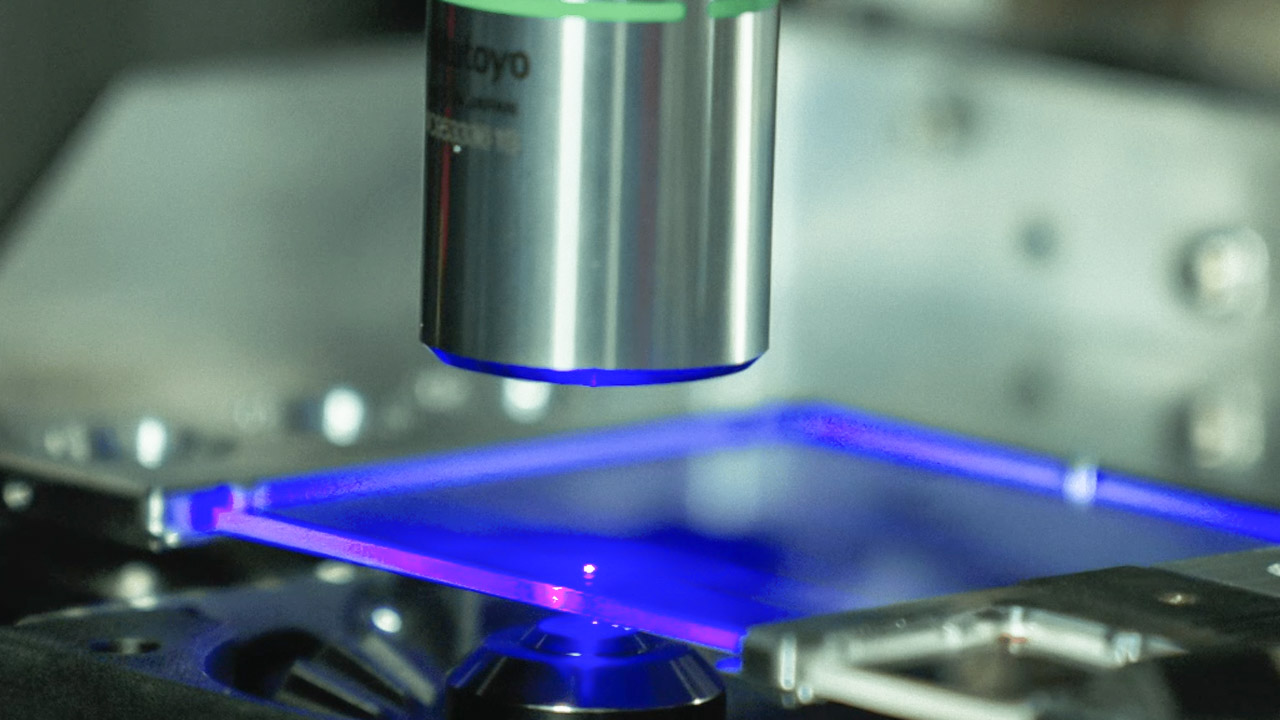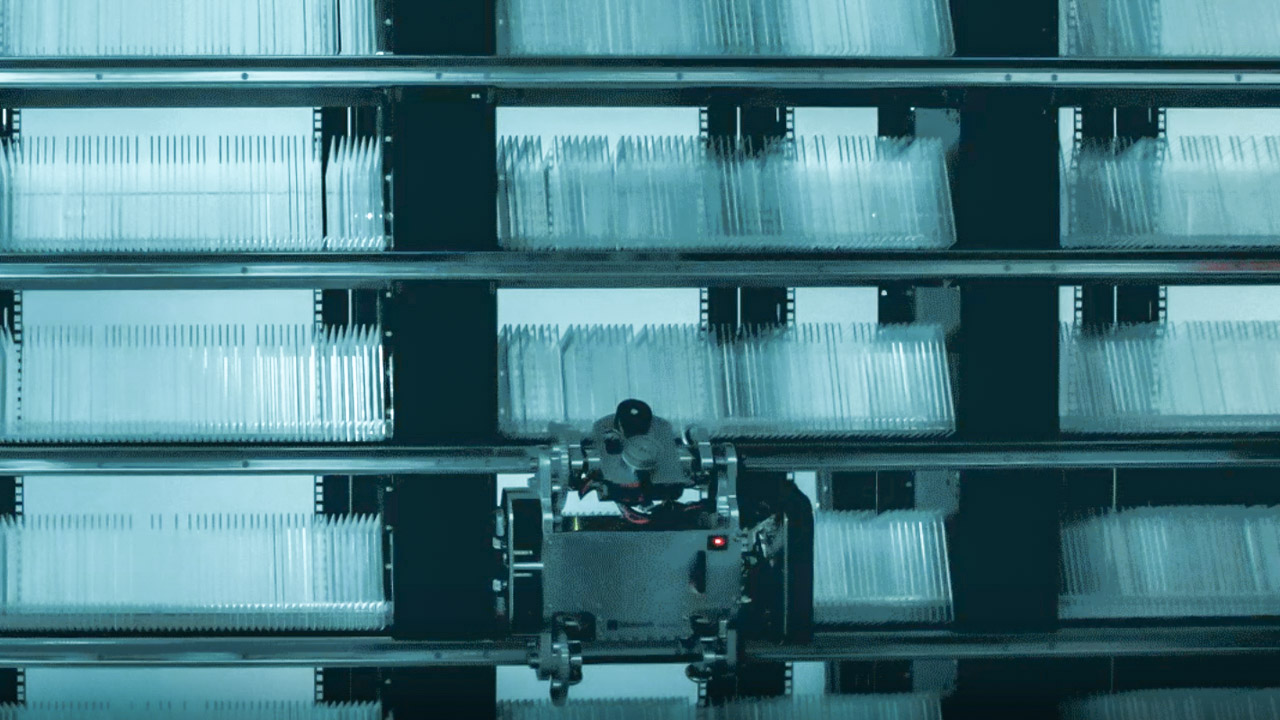Project Silica — how Microsoft’s new glass storage could change the world
The future of computer storage is just through the looking glass

“SSDs? Where we’re going, we don’t need SSDs." Apologies for butchering an all-time great movie line from Back to the Future, but the future of tech is very much on my mind after recent revelations surrounding Microsoft’s ‘Project Silica’.
In my head, I associate the latter word with the six-headed beastie from The Odyssey when I mispronounce it in my head. Silica is actually an oxide of silicon, and in real-world terms silicon dioxide is often involved in the production of various types of glass.
Appropriate, seeing as that’s what the future of storage is going to be built around if Microsoft pulls off its grand vision for how we house data going forward.
The concept of what The Big M is doing with Project Silica is one of those times when the term ‘mind-blowing’ not only feels accurate, but somehow inadequate at the same time.
It’s now possible to hold massive amounts of data on a pane of glass not much bigger than a coaster
The numbers Microsoft is projecting on its Unlocked blog (thanks, PCWorld) are so futuristic, they make the Terminator look about as technologically advanced as Dorothy’s Tin Man chum.
Thanks to the progress Microsoft has made with Silica, it’s now possible to hold truly massive amounts of data on a pane of glass not much bigger than a coaster. Just how ‘massive’ are we talking here? Several terabytes of data — enough storage to hold around 1.75 million songs.
The practice of building a colossal glass-based storage center for the purposes of historical musical preservation is already well underway. Microsoft’s Silica team is working with a venture group called Elire to harness the power of glass storage for the group’s Global Music Vault, located in Svalbard, Norway.
Get instant access to breaking news, the hottest reviews, great deals and helpful tips.
While the head-spinning possibilities of glass storage have a tantalizingly futuristic allure, the ultimate goal with Silica isn’t just to maximize storage capacity or efficiency; it’s to make the whole process more environmentally sustainable.
Speaking on Unlocked, one of the leading engineers behind Project Silica, Ant Rowstron, is keen to emphasize the current limitations of mechanical storage solutions. “Magnetic technology has a finite lifetime. You must keep copying it over to new generations of media. A hard disk might last five years… and that frankly, is both difficult and tremendously unsustainable if you think of all that energy and resource we’re using.”
Rowstron is right, of course. The shelf life on the types of mechanical storage drives we use in the best laptops and best gaming PCs is built to age about as well as your average episode of The Real Housewives of Salt Lake City. Currently, your average hard drive has a rough life expectancy of around 4-7 years, while even the best SSDs are only designed to last for a decade before the need to physically transfer their data to a new device becomes essential.
One of the core concepts and main appeals of Silica as a boundary-smashing example of the evolution in digital storage is that a tiny glass plate could preserve data for thousands of years.
A single quartz glass plate can hold a copy of War and Peace (wait for it) 875,000 times
That’s obviously an incredibly exciting prospect… providing our fossil fuel-loving species sticks around long enough to see the benefits of the peerless durability of glass storage.
Yet comments from Richard Black, Silica’s Research Director, highlight the focus of the project appears to be centered around uneditable preservation, not the notion of us all carrying around teeny bits of glass in our back pockets with 370,000 absolutely banging tunes on them. “This technology allows us to write data knowing it will remain unchanged and secure, which is a significant step forward in sustainable data storage," said Black.
Crucially, Sicilia’s primary aim is to transfer data onto pieces of glass, yet once the writing process is over, the data inside the glass can never be changed. So we’re very much in ‘write-only’ territory here, which kinda destroys my dream of owning a PS9 with 3TB of glass-based storage where I can install then uninstall hundreds of games on a whim.
A glass act

Not that Silica isn’t directly working in tandem with some of the storage options we currently have at our disposal. Indeed, its team has been closely working with their Microsoft Azure comrades in a mission to find the most eco-sustainable solution to data archival options.
Microsoft describes the relationship between Silica and the cloud-based Azure as “symbiotic," as the latter’s AI helps to speed up the read/write process. Oh, and if you want another example of the astronomical ambition of Silica, currently a single one of the project’s quartz glass plates can hold a copy of War and Peace (wait for it) 875,000 times.
Silica’s method of glass storage has been in the works for years, and the process has evolved over time. Right now, the method involves four key steps. There’s an initial writing process involving a femtosecond laser (a real word, I promise), a reading method that uses a computer-controlled microscope, some decoding, then the act of storing the glass in units. Said units are also described as “passive” by Microsoft, in this context meaning no electricity is required to maintain them.
Microsoft claims each plate is capable of storing 3,500 movies. So roughly the amount of Fast & Furious movies currently in existence.
The technique is now so advanced, a single piece of glass is capable of holding terabytes of data that could last 10,000 years. And for another fantastic piece of Microsoft-provided context, the tech giant claims each plate is capable of storing 3,500 movies. So roughly the amount of Fast & Furious movies currently in existence.
The idea behind a more sustainable form of data housing that could potentially last for thousands of years obviously has the potential to be a game-changer for our species.
While historical texts fade and even the fastest NVMe drives of the current day will at some stage go kaput, the power of glass storage means countless generations could benefit from having access to data that can endure for truly extraordinary periods of time.
How much a write-only data storage solution is going to enrich your average MacBook Air walking down the street in 2023 is obviously limited right now. But looking into the future, the endurance of and epic capacity Project Silicon possesses could change how we archive our most precious data forever.
More from Tom's Guide
- The best cloud storage solutions available
- The best PS5 internal SSDs
- The best free cloud storage you can access right now

Dave is a computing editor at Tom’s Guide and covers everything from cutting edge laptops to ultrawide monitors. When he’s not worrying about dead pixels, Dave enjoys regularly rebuilding his PC for absolutely no reason at all. In a previous life, he worked as a video game journalist for 15 years, with bylines across GamesRadar+, PC Gamer and TechRadar. Despite owning a graphics card that costs roughly the same as your average used car, he still enjoys gaming on the go and is regularly glued to his Switch. Away from tech, most of Dave’s time is taken up by walking his husky, buying new TVs at an embarrassing rate and obsessing over his beloved Arsenal.

